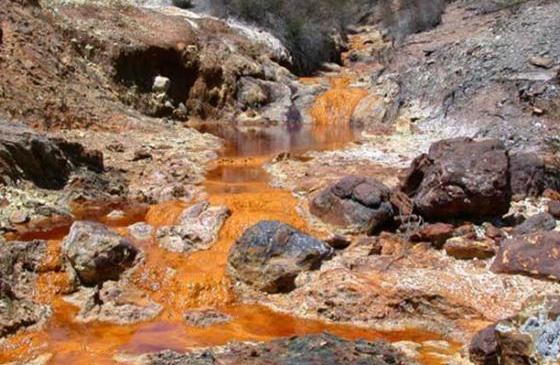A substantial body of research pertaining to sulfide-ore copper mining near the Boundary Waters Canoe Area Wilderness (BWCA) and Voyageurs National Park shows the significant risk of negative impacts —some irremediable— to wildlife, groundwater, lakes, rivers, and streams. These risks exist at all stages of mine development, operation, and closure. Multiple studies from varied sources indicate the potential for significant disruptions to ecosystems. The sampling of studies below highlight some of the threats posed by sulfide-ore copper mining.
WATER QUALITY IMPACTS:
- Contamination of BWCA is virtually inevitable under even normal sulfide-ore copper mining operations. Peer-reviewed research shows that even under normal mining operations pollution from a Twin Metals mine would move through surface and groundwater flows to the BWCA. In the study upon which the journal article was based, Dr. Myers stated: “If sulfide mines are developed in the Rainy Headwaters [part of the Boundary Waters watershed], it is not a question of whether, but when, a leak will occur that will have major impacts on the water quality of the Boundary Waters Canoe Area Wilderness.” Acid Mine Drainage Risks—A Modeling Approach to Siting Mine Facilities in Northern Minnesota, Tom Myers. 2016. Journal of Hydrology. 533: 277-290.
- Fourteen sulfide-ore copper mines operating in the U.S. experienced failures that harmed water quality. A peer-reviewed report on 14 modern sulfide-ore copper mines representing 89% of current US copper production showed all 14 experienced accidental releases of pollution, and 13 of 14 (92%) copper mines experienced water collection or treatment system failures that resulted in significant water pollution. “Research shows that mines with high acid generating potential and in close proximity to surface and groundwater are at highest risk for water quality impacts.” US Copper Porphyry Mines Report, Bonnie Gestring; Earthworks.
- There exists no technology today or envisioned tomorrow that can guarantee protection of downstream waters from sulfide-ore copper mining. A review of state-of-the-art technologies available to modern copper mine construction found that none could eliminate risk to downstream waters. Dr. Chambers concludes that, “It is not feasible, given today’s or tomorrow’s technology, to reduce the risk of impacting waters downstream from a copper/nickel mine in a sulfide ore body to zero.” The Potential for Acid Mine Drainage and other Water Quality Problems Using State-of-the-Art Prevention, Treatment and Mitigation Methods, Dave Chambers; Center for Science in Public Participation.
- The effectiveness of copper mining mitigation measures has been consistently overestimated. In a survey comparing copper mines’ predicted vs. actual performance, 76% of mines polluted nearby waters despite predictions that mitigation efforts would prevent them. “Comparisons of Predicted and Actual Water Quality at Hardrock Mines: The reliability of Predictions in Environmental Impact Statements,” Kuipers & Associates and Buka Environmental; Earthworks.
- Contaminant seepage into groundwater in the Rainy River Drainage Basin would reach Voyageurs National Park and last for centuries. If sulfide-ore copper mining were allowed in the watershed, there would be little chance of preventing the resulting pollution from reaching Voyageurs National Park. Discharge from mine dewatering would pollute nearby streams. “Technical Memorandum: Potential Metals Mining and the Voyageurs National Park Risk Assessment for Upstream Metals Mining,” Tom Myers; Prepared for Voyageurs National Park Association and National Parks Conservation Association.
- Tailings dams fail. Out of 147 identified tailings dam failures documented before 2008, 57 occurred in the United States. The paper reports another index of tailings dam incidents that recorded 185 tailings dam incidents in the United States between 1917-1989, and many additional tailings dam incidents were known to occur after 1990. “Reported tailings dam failures: A review of the European incidences in the worldwide context,” M. Rico et al., 2008. Published in the Journal of Hazardous Materials. 152(2):846-852.
WILDLIFE AND ECOSYSTEM IMPACTS:
- Fish habitats and species diversity are negatively affected by nearby mineral mines. A 2014 study showed the mining had a pronounced and consistent impact on fish assemblages (groups of fish that co-occur in an ecosystem) over large spatial scales. “Characterizing coal and mineral mines as a regional source of stress to stream fish assemblages,” Wesley Daniels et al; published in the journal Ecological Indicators 50:50-61
- Proposed mine’s secondary footprint would extend into the Boundary Waters. Mining activities would reduce and fragment total forest acreage. Water pollution would affect riparian and terrestrial soils and vegetation, increase invasive plant and animal species dispersal into the surrounding landscape; and alter wildlife migration and residence patterns. “Forest and terrestrial ecosystem impacts of mining,” Lee E. Frelich; Prepared for Northeastern Minnesotans for Wilderness
- Loons affected by sulfide-ore copper mining byproducts have damaged offspring. Methylmercury, a neurotoxin and byproduct of copper sulfide-ore mining, has demonstrated negative effects on wild loon populations. Loons at highest risk for environmental mercury contamination had 41% fewer fledged young than the reference group of lower risk loons. “Adverse effects from environmental mercury loads on breeding common loons,” David C. Evers, et al., Published in the journal, Ecotoxicology. 17(2):69-81
- Acid Mine Drainage negatively affects fish health and ecology. Acid mine drainage can affect fish populations and aquatic ecosystems both through direct toxicity and by indirect effects on the food chain and habitat availability. Episodes of acute toxicity can kill thousands of fish in a number of minutes. “Acid Mine Drainage and Effects on Fish Health and Ecology,” Reclamation Research Group Publication; prepared for the U.S. Fish & Wildlife Service, Department of the Interior.
03/31/2017
